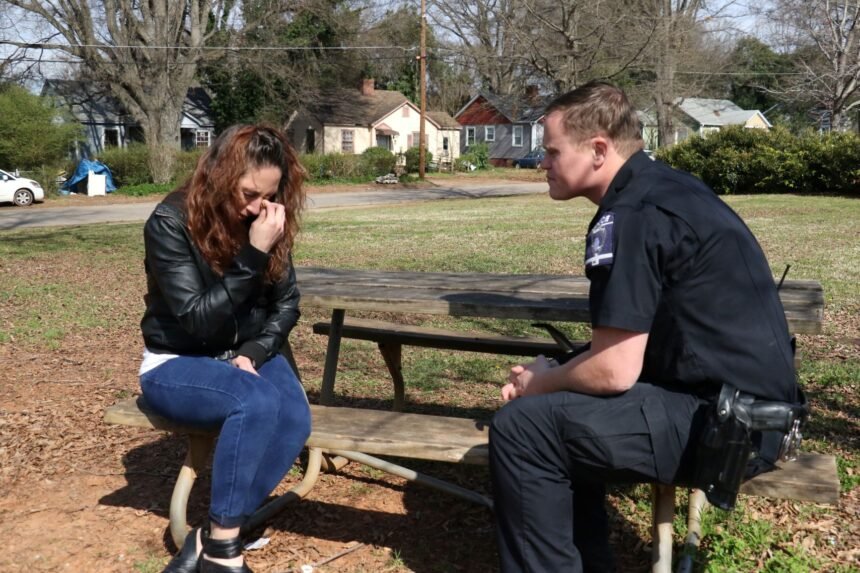Crisis Intervention Teams in Action, Crisis intervention teams (CITs) have become an essential part of how U.S. communities respond to individuals experiencing behavioral health emergencies. As mental health challenges impact people across all demographics, crisis intervention teams offer a targeted, effective, and compassionate approach, connecting law enforcement with mental health professionals and ensuring safer outcomes for those in crisis.
What Is a Crisis Intervention Team?
A crisis intervention team is a specially trained group of law enforcement officers, mental health practitioners, and community partners who respond to situations involving individuals in mental health distress. CIT programs operate as community-based models, improving the results of police interactions with people who have mental illnesses and are experiencing acute crises. These teams differ from traditional policing because their primary goal is not arrest or punishment, but de-escalation, connection to mental health resources, and the safety of all involved.
The Origins of CIT Programs
CITs were first developed in Memphis, Tennessee, following a tragic shooting involving police and an individual suffering from schizophrenia. The incident led to calls for better understanding, training, and partnership between law enforcement and mental health professionals. Since the 1980s, this model has expanded to over 2,700 communities nationwide, each adapting the structure to meet local needs.
What Does a Crisis Intervention Team Do?
The central mission of crisis intervention teams is to respond quickly and compassionately to individuals in psychiatric crisis, reducing the risk of injury, arrest, or escalation. CIT officers are equipped to handle situations such as suicide threats, psychosis, severe anxiety, and substance-induced crises.
-
De-escalate tense situations using specific communication strategies
-
Link individuals to emergency mental health care, hospitals, or recovery services
-
Divert those in crisis from jail toward treatment and support
-
Educate families and community members about mental health resources
-
Partner with local mental health centers, advocacy groups, and emergency services
How Do Crisis Intervention Teams Work?
CITs function as a coordinated network. When a 911 call indicates possible mental health distress, dispatchers can send CIT-trained officers and associated professionals to the scene. These responders assess the situation, communicate in a non-threatening way, and create a plan for safe resolution.
Key features of crisis intervention teams in practice:
-
Specialized training for officers (often 40+ hours, focusing on mental health, communication, and de-escalation)
-
Partnerships with hospitals, clinics, and peer advocates
-
Access to drop-off mental health facilities open 24/7 for law enforcement referrals
-
Ongoing collaboration between criminal justice and behavioral health agencies
-
Continuous monitoring and improvement based on case outcomes
In many communities, CITs also maintain relationships with mobile crisis response teams and social workers, providing wraparound support and follow-up even after the crisis moment.
Building a Countywide Crisis Intervention Team
Transforming the CIT model from a small local program into a countywide initiative requires strategic planning and collaboration.
Steps to Build a Countywide CIT Program:
-
Engage Stakeholders: Begin with outreach to police departments, mental health centers, county officials, judges, and advocacy organizations. Hold community forums to identify gaps in crisis response and build a steering committee for oversight.
-
Develop Training and Policies: Create standardized training materials for officers and mental health partners. Write memorandums and agreements that clarify roles, responsibilities, and data-sharing protocols.
-
Establish 24/7 Crisis Centers: Secure funding and partnerships to maintain facilities where officers can safely transport individuals in crisis at any hour. These centers must be accessible and staffed by skilled mental health professionals.
-
Monitor and Evaluate: Track metrics such as diversion rates (moving individuals from jail to care), repeat crises, officer injury rates, and community feedback. Adjust the program as needed in response to observed challenges and successes.
-
Scale Up Partnerships: As success grows, expand training to all law enforcement divisions, EMS, and school resource officers. Foster relationships with social service agencies and peer support advocates for seamless care after the crisis.
A strong CIT program becomes a pillar of public safety, reducing arrests and use-of-force incidents while improving outcomes for those in crisis.
Benefits of Crisis Intervention Teams
Research and real-world case studies consistently show several positive impacts of CITs:
-
Reduced officer injuries and complaints during mental health calls
-
Increased diversion from jail to community care
-
Lower rates of repeat crises due to improved follow-up and treatment access
-
Enhanced trust between law enforcement, mental health agencies, and communities
-
Improved officer confidence in handling mental health emergencies
For a deeper dive into CIT effectiveness and implementation guides, visit the National Alliance on Mental Illness (NAMI), a leading authority on CITs: NAMI Crisis Intervention Team Programs.
How to Make Your Community’s CIT Program Thrive
A successful CIT is not just about specialized police training—it’s a collaborative ecosystem. Communities that build robust relationships among law enforcement, healthcare providers, local government, and citizens create stronger crisis intervention solutions. Regular evaluation, ongoing training, public engagement, and adaptable policies are vital.
Key tips for thriving programs:
-
Appoint CIT liaisons for every precinct, ensuring best practices are followed consistently
-
Include psychiatrists and clinicians in leadership roles for real-time decision support
-
Use data-driven insights to adjust practices and demonstrate results to funders
-
Foster open communication with families and those with lived experience in mental health crises
Read More: Crisis Intervention Teams: What They Are and How They Work in Modern Communities
Conclusion
Crisis Intervention Teams in Action, Crisis intervention teams are a crucial layer in the public safety and mental health response system. By combining the expertise of law enforcement, clinicians, social services, and advocates, CITs compassionately address acute behavioral health emergencies, connecting individuals to the care they need instead of jail. Whether you’re planning to build a countywide CIT or want to understand how these teams work, embracing collaboration and continuous improvement will ensure your program succeeds—and saves lives.








